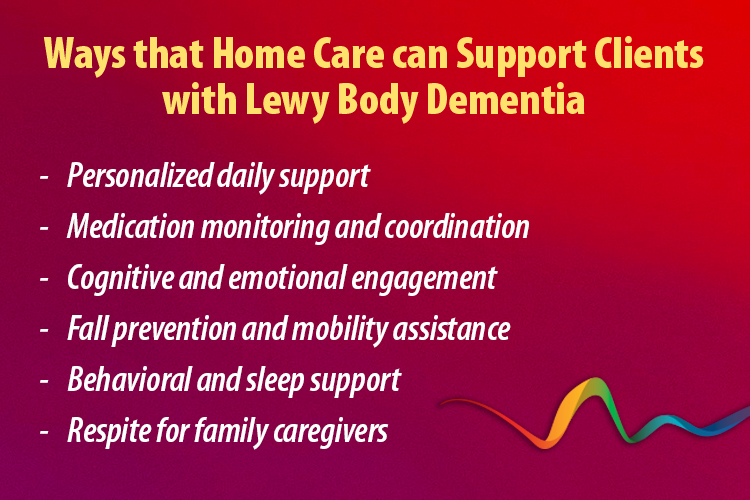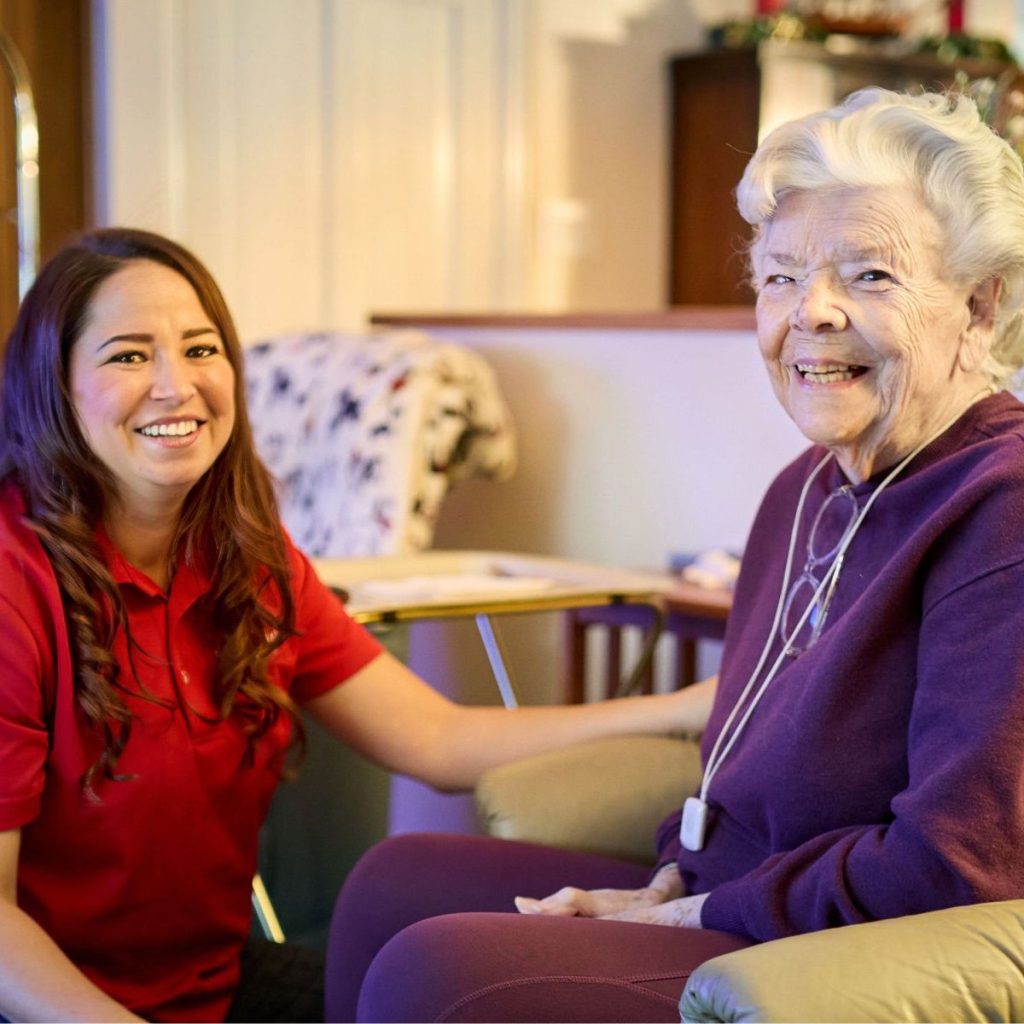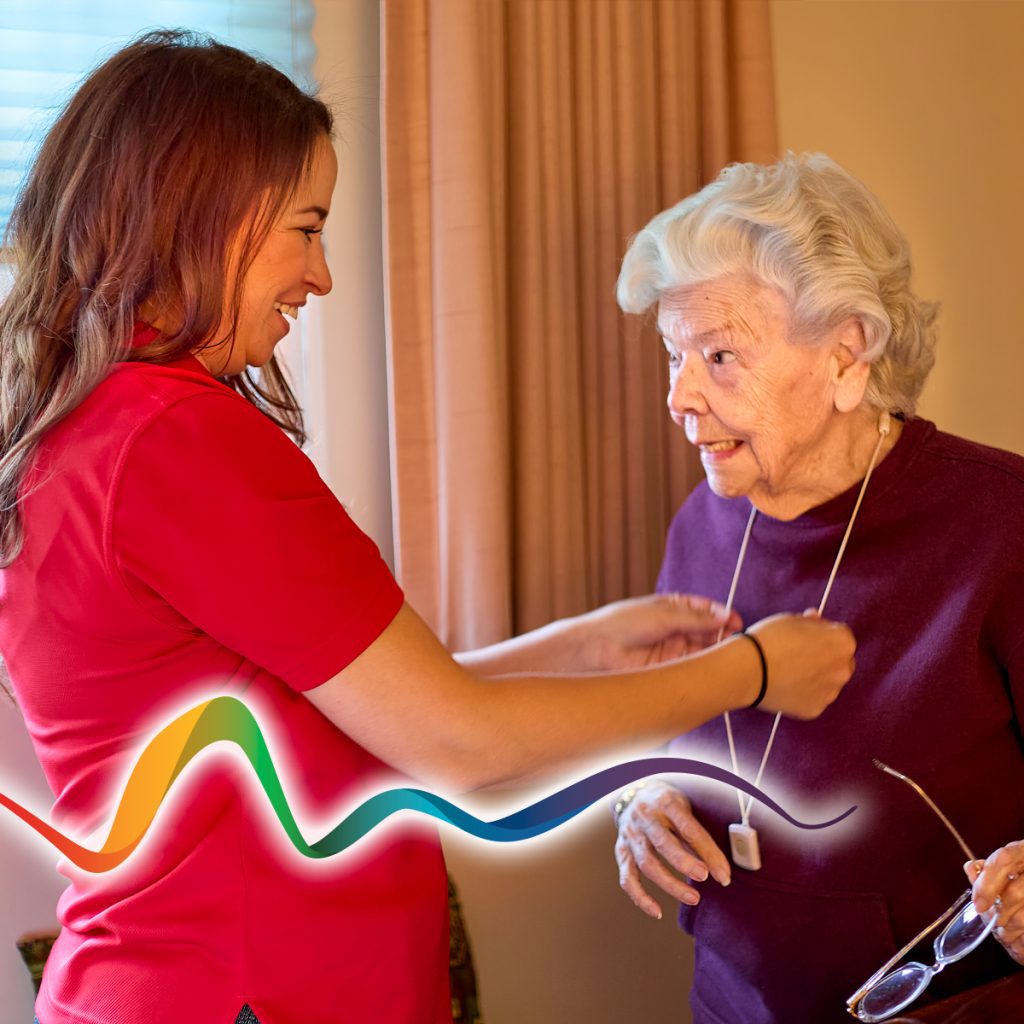Lewy Body Dementia (LBD) is a progressive brain disorder that affects memory, thinking, movement, and behavior. It is the second most common type of dementia after Alzheimer’s disease, but it is often underdiagnosed or misdiagnosed. Characterized by the presence of abnormal protein deposits—called Lewy bodies—in the brain, this condition can be especially complex because it shares symptoms with both Alzheimer’s and Parkinson’s disease. For families and caregivers, understanding LBD is essential for managing symptoms, seeking appropriate medical treatment, and ensuring quality care at home.
What Are the Symptoms of Lewy Body Dementia?
Lewy Body Dementia (LBD) is known for fluctuating cognitive abilities, vivid visual hallucinations, movement difficulties, sleep disturbances, and extreme sensitivity to certain medications. These symptoms can vary widely from day to day—or even hour to hour—making consistent care and professional guidance critical. It typically begins with early cognitive changes, such as confusion, poor attention, and visual hallucinations, before or at the same time as movement problems.

Lewy Body Dementia is an umbrella term that includes two closely related diagnoses: dementia with Lewy bodies and Parkinson’s disease dementia. Both conditions involve the buildup of Lewy bodies, but the timing of cognitive decline relative to motor symptoms determines the specific diagnosis.
A diagnosis of Dementia with Lewy Bodies (DLB) is often associated with fluctuating alertness, vivid visual hallucinations, sleep disturbances (like acting out dreams), and sensitivity to antipsychotic medications. Motor symptoms, such as tremors or stiffness, may appear but are usually less pronounced early on.
Parkinson’s disease Dementia (PDD), on the other hand, starts with a clear diagnosis of Parkinson’s disease, characterized by motor symptoms such as tremors, slowed movement, and rigidity. Cognitive decline develops later in the disease, often after at least a year of motor symptoms. Memory issues, slowed thinking, and difficulty with problem-solving are common in PDD, but hallucinations and fluctuations in alertness are typically less pronounced early on compared to DLB.
The primary difference between the two lies in the timing of symptoms: If cognitive symptoms appear before or within a year of motor symptoms, it’s usually classified as DLB; if cognitive symptoms arise a year or more after Parkinson’s motor symptoms, it’s considered PDD.
What Behaviors Can You Expect From People with Lewy Body Dementia?
People with Lewy body dementia often display fluctuating behavior and mood, including periods of confusion, depression, anxiety, apathy, and irritability. Visual hallucinations and delusions are common and sometimes lead to paranoia or misidentification. There may be episodes of agitation, aggression, sleep disturbances, such as acting out dreams, and movement symptoms, including stiffness or tremors.
Caregivers frequently notice unpredictable changes in alertness and attention, along with rapid shifts in behavior, ranging from withdrawn to agitated or impulsive. These symptoms tend to intensify as the disease progresses.
What is the 3 Minute Test for Lewy Body Dementia?
The 3-minute test for Lewy body dementia, known as the Lewy Body Composite Risk Score (LBCRS), is a brief screening tool consisting of 10 yes-or-no questions. Six questions address non-motor symptoms, such as hallucinations, cognitive fluctuations, and sleep disturbances, while the remaining four focus on motor issues, including rigidity and balance problems.
If a patient answers “yes” to at least three questions, it increases the likelihood of a Lewy body dementia diagnosis. The LBCRS helps healthcare professionals efficiently identify possible cases for further specialist evaluation.
How is Lewy Body Dementia Different from Dementia?
Lewy body dementia differs from other forms of dementia in several essential ways. While all dementias involve progressive cognitive decline, Lewy body dementia is marked by pronounced fluctuations in alertness and attention, vivid visual hallucinations, and movement symptoms that resemble Parkinson’s disease, such as tremors, stiffness, and changes in walking.
In contrast, Alzheimer’s disease, the most common dementia, typically begins with memory loss and gradually impacts language, behavior, and personality, but movement issues rarely emerge until later stages.
Hallucinations and dream enactment (REM sleep behavior disorder) are much more common and often appear earlier in Lewy body dementia. At the same time, Alzheimer’s patients rarely experience these symptoms until the disease advances. People with Lewy body dementia may also have severe sensitivity to antipsychotic medications and unpredictable changes in cognition or alertness, with some days of clarity and others of pronounced confusion.
Lewy body dementia is characterized by a unique mix of cognitive, psychiatric, and motor symptoms, as well as distinct sleep disturbances, making its profile and disease course quite different from classic Alzheimer’s or other dementias.
What Medications Can Help Manage Lewy Body Dementia?
While there is no cure for LBD, several medications can help manage its symptoms. Because individuals with LBD may react differently to drugs than those with other forms of dementia, treatment must be tailored and closely monitored by a neurologist or geriatric specialist. The following are medications that are often used for LBD patients:
- Cholinesterase inhibitors—Medications such as rivastigmine (Exelon) and donepezil (Aricept) are often used to help with cognitive symptoms such as confusion and memory loss. These drugs can also improve alertness and reduce hallucinations in some individuals.
- Parkinson’s medications—To help manage movement problems, doctors may prescribe carbidopa-levodopa (Sinemet). However, they must do this cautiously, as it can worsen hallucinations or delusions in some patients.
- Antipsychotic medications—Extreme care is required when considering antipsychotics. Traditional antipsychotics like haloperidol can be dangerous for people with LBD, sometimes causing severe side effects or even death. In cases where antipsychotic treatment is necessary, physicians may try newer medications, such as quetiapine (Seroquel), at the lowest effective dose.
- Medications for sleep and mood—Sleep issues are common in LBD, particularly REM sleep behavior disorder (RBD), where individuals physically act out their dreams. Melatonin and clonazepam are often used to manage this. For anxiety or depression, low doses of SSRIs (such as sertraline) may be beneficial.
Because people with LBD can be highly sensitive to medications, every new prescription should be introduced slowly and monitored closely.
Can Someone with Lewy Body Dementia Live at Home?
Individuals with Lewy body dementia can often live at home, especially in the early to middle stages, with proper support and safety adaptations. In-home care, frequent family visits, and assistive devices can help maintain independence and quality of life as the disease progresses. Caregivers can assist with daily activities, address mobility issues, and help individuals manage symptoms, enabling them to remain in familiar surroundings for longer periods. However, as symptoms advance or become unpredictable, increased supervision and professional help may be required for safety and your loved one’s well-being.
How Can Home Care Support Clients with Lewy Body Dementia?

Caring for someone with Lewy body dementia is complex and can be emotionally and physically demanding for family members, a trained home caregiver can make a significant difference. A well-rounded care team can provide consistent routines, monitor changes in condition, and ensure safety while promoting independence and dignity. Rhythms Home Care (RHC) services include the following:
- Personalized daily support—Home caregivers can assist with the activities of daily living (ADLs) such as bathing, grooming, dressing, and eating—tasks that can become increasingly difficult as LBD progresses. Caregivers can adjust routines to match the client’s fluctuating energy and cognitive levels, providing help when needed and space when possible.
- Medication monitoring and coordination—Since medication sensitivity is a hallmark of LBD, home care providers can help track side effects, ensure the client is taking medications properly, and communicate changes to their healthcare team. This helps prevent dangerous drug interactions and supports more responsive care planning.
- Cognitive and emotional engagement—Trained caregivers can provide mental stimulation through conversation, games, music therapy, and structured activities that match the client’s interests and abilities. Regular interaction supports brain health and can reduce feelings of confusion, isolation, or agitation.
- Fall prevention and mobility assistance—Mobility challenges are common in LBD, increasing the risk of falls. Home care teams can assess the home environment for safety risks and provide hands-on support for walking or transferring. This reduces injury risk and can give family members peace of mind.
- Behavioral and sleep support—Hallucinations, delusions, and sleep disruptions are distressing symptoms of LBD. Trained caregivers can gently redirect clients, offer calming routines, and provide overnight care if needed. Familiarity with the client’s patterns also allows for early detection of worsening symptoms or medication side effects.
- Respite for family caregivers—Caring for a loved one with LBD can be challenging. Home care allows family members to take needed breaks while ensuring their loved one is safe and cared for. Whether for a few hours a week or full-time care, professional support helps reduce burnout and can improve the quality of life for everyone involved.
A Compassionate Approach to a Complex Condition
 Lewy body dementia brings a unique set of challenges, but families are not alone. With appropriate medical management and thoughtful, consistent home care, individuals with LBD can live safely and comfortably at home for much longer.
Lewy body dementia brings a unique set of challenges, but families are not alone. With appropriate medical management and thoughtful, consistent home care, individuals with LBD can live safely and comfortably at home for much longer.
The caregivers at Rhythms Home Care understand the nuances of LBD and offer compassionate, skilled in-home care tailored to each client’s needs. Whether you’re just starting to explore support options or need a trusted team right away, we’re here to help you navigate the journey with dignity, respect, and professional guidance. Contact us today to find out more.





